- Joined
- Oct 9, 2007
- Messages
- 47,901 (7.37/day)
- Location
- Dublin, Ireland
| System Name | RBMK-1000 |
|---|---|
| Processor | AMD Ryzen 7 5700G |
| Motherboard | Gigabyte B550 AORUS Elite V2 |
| Cooling | DeepCool Gammax L240 V2 |
| Memory | 2x 16GB DDR4-3200 |
| Video Card(s) | Galax RTX 4070 Ti EX |
| Storage | Samsung 990 1TB |
| Display(s) | BenQ 1440p 60 Hz 27-inch |
| Case | Corsair Carbide 100R |
| Audio Device(s) | ASUS SupremeFX S1220A |
| Power Supply | Cooler Master MWE Gold 650W |
| Mouse | ASUS ROG Strix Impact |
| Keyboard | Gamdias Hermes E2 |
| Software | Windows 11 Pro |
Thermalright today introduced the Assassin X 90 SE, a compact tower-type CPU cooler designed to replace the stock CPU cooling solution with something that's quieter at stock frequencies. The aluminium fin tower-type cooler features a typical design for its kind—four 6 mm-thick nickel-plated copper heat pipes make direct contact with the CPU at an aluminium base; with their ends passing through an aluminium fin-stack that's capped off by a die-case top-plate. This is then ventilated by an included Thermalright TL-G9B 92 mm PWM fan.
The defining feature is the cooler's height of just 118 mm. With its fan in place, the cooler measures 94 mm x 77 mm x 118 mm, weighing 445 g. The included 92 mm fan features fluid dynamic bearing, takes in 4-pin PWM input, turns at speeds of up to 2,400 RPM, pushing up to 43 CFM of airflow at 1.51 mm H₂O pressure, and has a noise output of 27.3 dBA. Among the CPU socket types supported are LGA1700, AM5, AM4, and LGA1200. The company didn't reveal pricing.
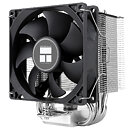
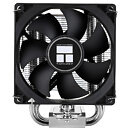
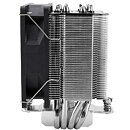
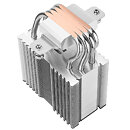
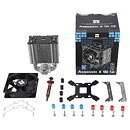
View at TechPowerUp Main Site
The defining feature is the cooler's height of just 118 mm. With its fan in place, the cooler measures 94 mm x 77 mm x 118 mm, weighing 445 g. The included 92 mm fan features fluid dynamic bearing, takes in 4-pin PWM input, turns at speeds of up to 2,400 RPM, pushing up to 43 CFM of airflow at 1.51 mm H₂O pressure, and has a noise output of 27.3 dBA. Among the CPU socket types supported are LGA1700, AM5, AM4, and LGA1200. The company didn't reveal pricing.





View at TechPowerUp Main Site





 Why wouldn’t Noctua or similar just charge $200 for a heatsink with rods if the performance were better?
Why wouldn’t Noctua or similar just charge $200 for a heatsink with rods if the performance were better?